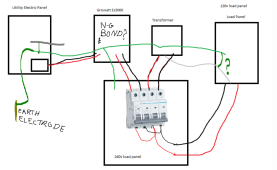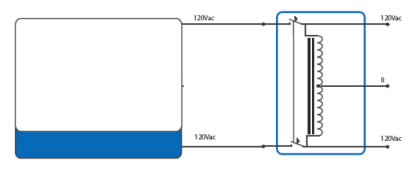Was thinking about this on the way to work today...

I think a setup like this gives you reasonably good protection from a floating neutral with a 240v inverter?
No flipping / tripping of a breaker results in a floating neutral. (tripping the transformer breaker cuts all power to the load panels)
You could still have a failed transformer or lose wire, but a regular utility connected house is still susceptible to either of those failure modes.
Assuming this does make sense, anyone know where to get quad common-trip breakers?
Do any manufactures let you "mix and match" single breakers and connect them for common trip?
Otherwise it might be impossible to find a quad breaker with 2 higher current breakers for the inverters and 2 lower current breakers for the transformer.

I think a setup like this gives you reasonably good protection from a floating neutral with a 240v inverter?
No flipping / tripping of a breaker results in a floating neutral. (tripping the transformer breaker cuts all power to the load panels)
You could still have a failed transformer or lose wire, but a regular utility connected house is still susceptible to either of those failure modes.
Assuming this does make sense, anyone know where to get quad common-trip breakers?
Do any manufactures let you "mix and match" single breakers and connect them for common trip?
Otherwise it might be impossible to find a quad breaker with 2 higher current breakers for the inverters and 2 lower current breakers for the transformer.






